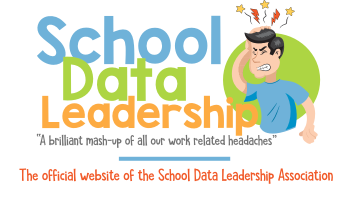Provide clear rationale for decisions and distribute resources equitably to advance shared vision and goals focused on the needs of all students.
1. Transparent Decision-Making Process: Establish a transparent decision-making process that clearly communicates the rationale behind resource allocation decisions. Ensure that stakeholders understand how decisions are made and why certain priorities are chosen to advance the shared vision and goals of the school or district.
- Resource: Edutopia offers articles and videos on transparent decision-making practices in education.
2. Needs Assessment: Conduct a comprehensive needs assessment to identify the unique needs of all students and prioritize resource allocation accordingly. Engage stakeholders in the needs assessment process to ensure that diverse perspectives are considered and that resources are distributed equitably.
- Resource: National Center for Education Statistics (NCES) provides data and resources for conducting needs assessments and analyzing student demographics and outcomes.
3. Equity Lens: Apply an equity lens to resource allocation decisions to ensure that resources are distributed fairly and that students with the greatest needs receive the support they require to succeed. Consider factors such as socioeconomic status, race, ethnicity, language proficiency, and special education status when determining resource allocation priorities.
- Resource: Equity Literacy Institute offers resources and tools for applying an equity lens to education policies and practices.
4. Data-Informed Decision Making: Use data to inform resource allocation decisions and track progress towards achieving shared vision and goals. Analyze student outcomes, performance data, and demographic information to identify areas of need and allocate resources accordingly.
- Resource: Panorama Education offers tools and resources for collecting, analyzing, and visualizing data to inform decision-making and resource allocation.
5. Stakeholder Engagement: Engage stakeholders, including students, families, staff, and community members, in the resource allocation process to ensure that diverse perspectives are represented and that decisions reflect the needs and priorities of the entire school community.
- Resource: ThoughtExchange is a platform that facilitates open and inclusive conversations, allowing participants to share ideas and prioritize solutions collaboratively.
6. Transparent Budgeting Practices: Adopt transparent budgeting practices that clearly outline how funds are allocated and used to support student learning and achievement. Provide stakeholders with access to budget information and involve them in budget review processes to promote accountability and transparency.
- Resource: National Association of School Business Officials (ASBO) offers resources and guidelines for transparent budgeting practices in schools.
7. Resource Alignment: Align resources with the priorities outlined in the shared vision and goals of the school or district. Ensure that resources are directed towards initiatives and programs that have the greatest potential to positively impact student outcomes and advance equity and excellence for all students.
- Resource: Education Resource Strategies (ERS) offers resources and tools for aligning resources with strategic priorities in education.
8. Continuous Monitoring and Evaluation: Continuously monitor and evaluate the effectiveness of resource allocation decisions in advancing shared vision and goals. Use data and feedback from stakeholders to assess the impact of resource allocation strategies and make adjustments as needed to ensure that resources are being used effectively to meet the needs of all students.
- Resource: Continuous School Improvement offers resources and tools for monitoring and evaluating resource allocation decisions and their impact on student outcomes.
By implementing these strategies and utilizing the recommended resources, educational leaders can provide clear rationale for decisions and distribute resources equitably to advance shared vision and goals focused on the needs of all students, promoting excellence and equity in education.
